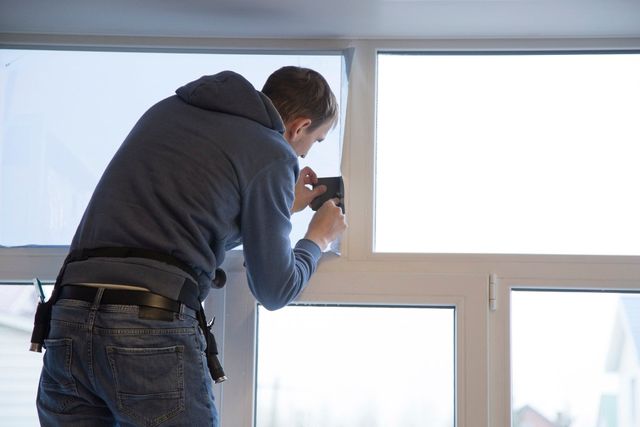Just How Residential Window Tinting Boosts Your Home's Energy Performance
Residential window tinting provides an engaging remedy for homeowners seeking to improve energy effectiveness within their living areas. By using specialized films to home windows, it successfully minimizes warmth transfer, thereby stabilizing indoor temperatures and reducing the requirement for extreme heating or cooling.
Comprehending Window Tinting
Comprehending window tinting is vital for house owners looking for to improve both comfort and energy efficiency in their home. Residential Window Tint. Window tinting involves the application of a slim movie to the inside or outside surface of glass windows. This movie can significantly regulate the quantity of sunlight and warm that enters a home, thus affecting interior environment conditions
There are numerous kinds of window tinting movies available, each with distinctive homes. The effectiveness of home window tinting is frequently gauged by its Visible Light Transmission (VLT) portion, which shows how much light can pass with the film.
Benefits of Power Effectiveness
Home window tinting not only boosts looks but additionally plays a significant duty in improving power efficiency within property rooms. By decreasing warmth transfer through windows, colored films produce an extra stable indoor environment, which can lead to considerable decreases in energy usage for heating & cooling. This energy effectiveness converts into lower energy costs, providing homeowners with considerable long-lasting cost savings.

In addition, home window tinting improves the convenience of living areas. By reducing glare and obstructing damaging UV rays, tinted home windows create an even more pleasurable environment, which can bring about enhanced health for passengers. The protection versus UV rays likewise helps preserve furnishings and flooring from fading, contributing to the long life of family items.
Exactly How Tinting Functions
Tinting movies operate via a combination of innovative materials and modern technologies developed to regulate the amount of solar energy getting in a home. Mainly made up of polyester, these films commonly incorporate metallic or ceramic particles that absorb and show warmth. This dual capacity allows them to substantially reduce the penetration of ultraviolet (UV) rays and infrared radiation while allowing noticeable light to pass through.
The efficiency of home window tinting is measured by its solar warm gain coefficient (SHGC), which shows how much solar energy is transferred via the window. Lower SHGC worths are better as they denote better warmth being rejected. In addition, window colors can include a variety of shades, allowing house owners to tailor their aesthetic preferences while enhancing power performance.
Furthermore, these films serve as a barrier, stopping warmth loss throughout cooler months by mirroring indoor heat back right into the home. This thermal insulation effect complements the cooling benefits gained during warmer months, contributing to a balanced indoor environment year-round. By taking care of solar power properly, residential home window tinting not just boosts convenience yet additionally plays an essential duty in lowering power usage and reducing utility bills.
Choosing the Right Tint

There are numerous types directory of window movies readily available, including dyed, metalized, and ceramic. Colored movies are cost-effective however might have restricted resilience. Metalized movies supply better heat being rejected yet can disrupt electronic signals. Ceramic films offer exceptional warmth control without jeopardizing presence and are highly sturdy, making them a popular choice.
Noticeable light transmission (VLT) is another essential element, as it suggests the amount of natural light that can pass through the tinted glass. Property owners ought to choose a tint with a VLT that complements their lighting preferences while still providing adequate glare decrease.
In addition, analyzing the solar warmth gain coefficient (SHGC) can assist establish just how well a color can obstruct heat from sunlight. A reduced SHGC shows much better warm control, eventually enhancing power performance.
Installment and Upkeep Tips
Correct setup and upkeep are crucial elements in taking full advantage of the benefits of property window tinting. To attain ideal outcomes, it is a good idea to hire a certified professional for installment. This guarantees that the color is applied correctly, preventing air bubbles, wrinkles, or misalignment that can jeopardize efficiency. Experts additionally utilize specialized devices and methods, which can boost the sturdiness and performance of the tint.
Complying with setup, upkeep is crucial to prolong the life of the window film. It is recommended to wait at least 30 days before cleaning the tinted windows to allow the adhesive to treat completely.
Dealing with these issues useful reference without delay can protect against additional damage and maintain power effectiveness. By adhering to these installation and upkeep suggestions, property owners can guarantee their home window tinting continues to provide substantial power savings and convenience for years to come.
Verdict
In conclusion, property home window tinting serves as an efficient solution for improving power efficiency within homes. By decreasing warmth transfer and blocking dangerous UV rays, home window films contribute to lower power intake and improved indoor convenience.
Home window tinting involves the application of a thin film to the inside or outside surface area of glass windows. By decreasing warm transfer via home windows, colored films create a much more steady interior environment, which can lead to significant reductions in energy usage for home heating and air conditioning.The performance of window tinting is measured by its solar heat gain coefficient (SHGC), which suggests exactly how much solar power is sent through the window. By managing solar energy efficiently, property window tinting not only improves convenience however additionally plays a crucial duty in lowering power usage and decreasing utility bills.
By reducing heat transfer and blocking hazardous UV rays, go to this website window films contribute to lower power intake and boosted interior convenience.